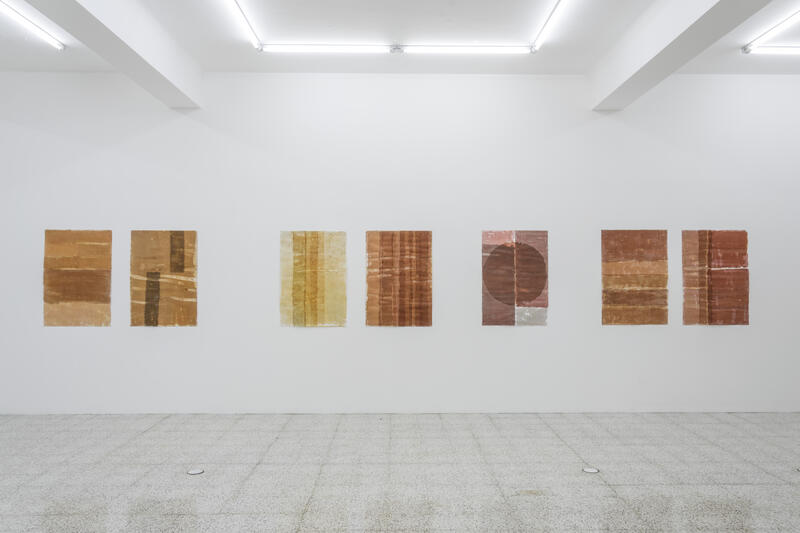Sandra Monterroso presents Distorsions and Imperfections at The 9.99 Gallery
From Thursday, April 27 until June 10, it is possible to see "Distorsions and Imperfections", the new exhibition by the Guatemalan artist Sandra Monterroso in The 9.99 gallery.

For The 9.99 Gallery, it is an honor to present its second exhibition of the year "Sandra Monterroso: Distorsiones e Imperfecciones," (Sandra Monterroso: Distortions and Imperfections), a show of recent work by the artist. This time, Monterroso exhibits works on paper, painting, sculpture, and video; and with the help of the materials selected, she explores themes of historical memory, healing, contrasts between the organic and the artificial; and above all, reflections and claims of a millenary culture of which we are all part.
For this exhibition, Monterroso has selected as a guiding thread the achiote, an organic material closely related to the history of the American continent. For example, in her watercolors, the paper is covered by a kind of bandage tinted with this pigment and others such as watercolor and Indian ink. These reveal earthy colors of different intensities that together form a composition of lines and organic blocks. For Monterroso, these paper sheets are imperfections and distortions, because it is the achiote solution that spreads between their fibers and freely stains them. The achiote fruit, native to the Americas, has been used by ancient civilizations throughout the continent as body painting, ritualistic makeup, sunscreen, a meal additive, and especially to heal wounds. That is why for the artist, "these works on paper are lines, fragments, wounds, and dirt roads." Wounds because for her the paper is a skin and the gesture of dyeing and covering it with achiote is also an act of healing, not only with the substance but also with history itself and its fractures of violence, conquest, and imposition. The artist asks, are we starting to heal?
At the same time, the idea of imperfection and distortion has a political charge. The idea of modernity or history are distorted lines based on a conception of the ideal or the perfect, but which end up being a false illusion. It is here that Monterroso’s new work is inserted in the postmodernity of Gianni Vattimo and the decolonial theory of thinkers like Walter Mignolo. The latter mentions in his text "Coloniality: the hidden face of modernity" "that modernity is a European narrative that has a hidden and darker side, coloniality," arguing that the idea of modern utopia is an imposed unilateral look. For the artist, whose position is in constant criticism in the face of the crisis of modernity, these postulates also mean a return to one’s origins and roots, nature, traditions, and cultural heritage, not without being critical and to understand that the institutionalized historical line is one told by the victors.
This is the background theme in the work "La otra línea histórica, cara o cruz” (The other historical line, head or tails), eight meters long and built with small tufts of black feathers. The latter are attached to an achiote-stained blanket forming a line along with the pennies that the artist has collected over the years. This piece uses the same feathers utilized in the performance "The Return of Vucub Caquix’s Headdress," realized in 2014 to reference Moctezuma’s headdress. The pennies show the face of Fray Bartolomé de las Casas, a Spanish Crown cleric involved in the conquest and Guatemala’s national coat of arms, symbols that Monterroso uses to question the paradox that exists between the power relations of the territories and to ask ourselves if we have achieved true independence.
Since the beginning of the nineties, Monterroso has used video as her principal medium, starting from the moving image and progressing to other techniques such as drawing, painting, watercolor, or sculpture. "Sandra Monterroso: Distorciones e Imperfecciones" presents a series of videos of small actions that the artist makes with her body and achiote, because for her, "performance is the space of rituals," and to realize them is to connect her body with that tradition and to magnify the experience of healing and history. Other works in her past production also include elements such as threads and natural dyes, coconuts or feathers, making the material the connector between universal history, the history of art, and our task of healing in the present time.
"I think it's important to talk about healing," says the artist. "Not directly from the wound as an element that remains open, but rather from the process of healing and art is a space for that," she adds.




